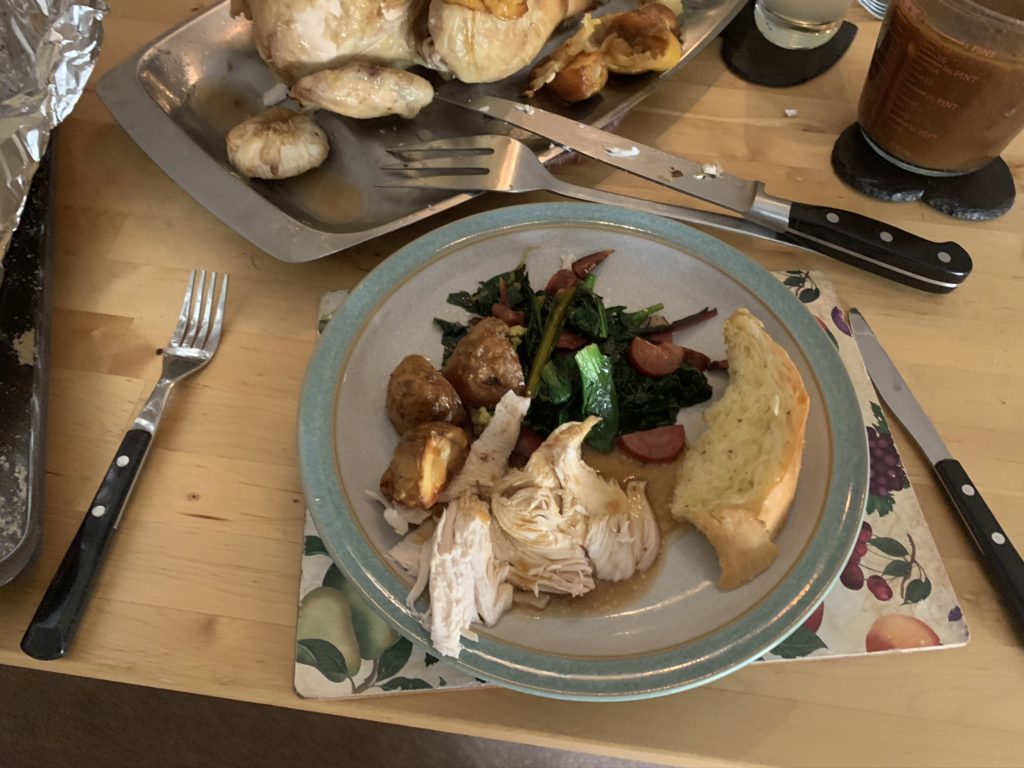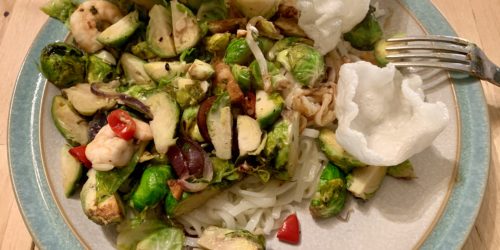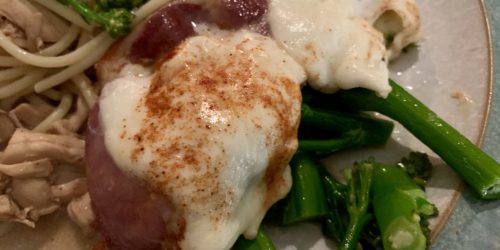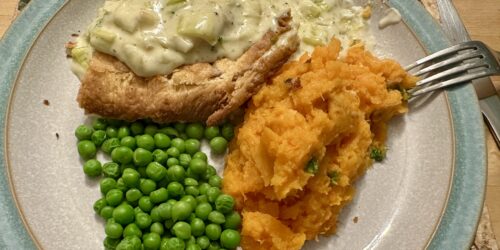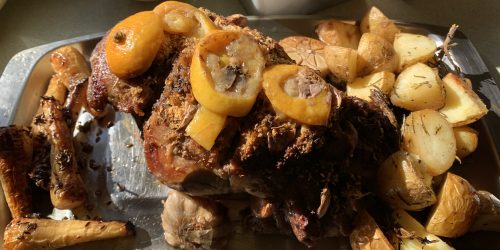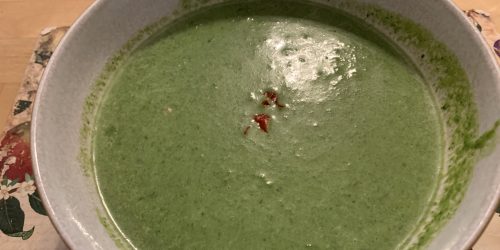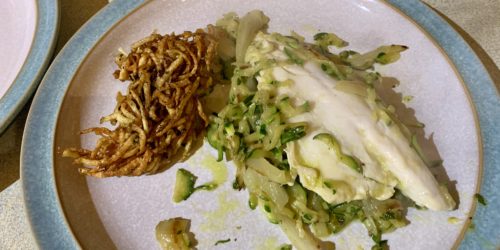Winner winner chicken dinner
Roast chicken. Joshua’s favourite. You just can’t beat it.
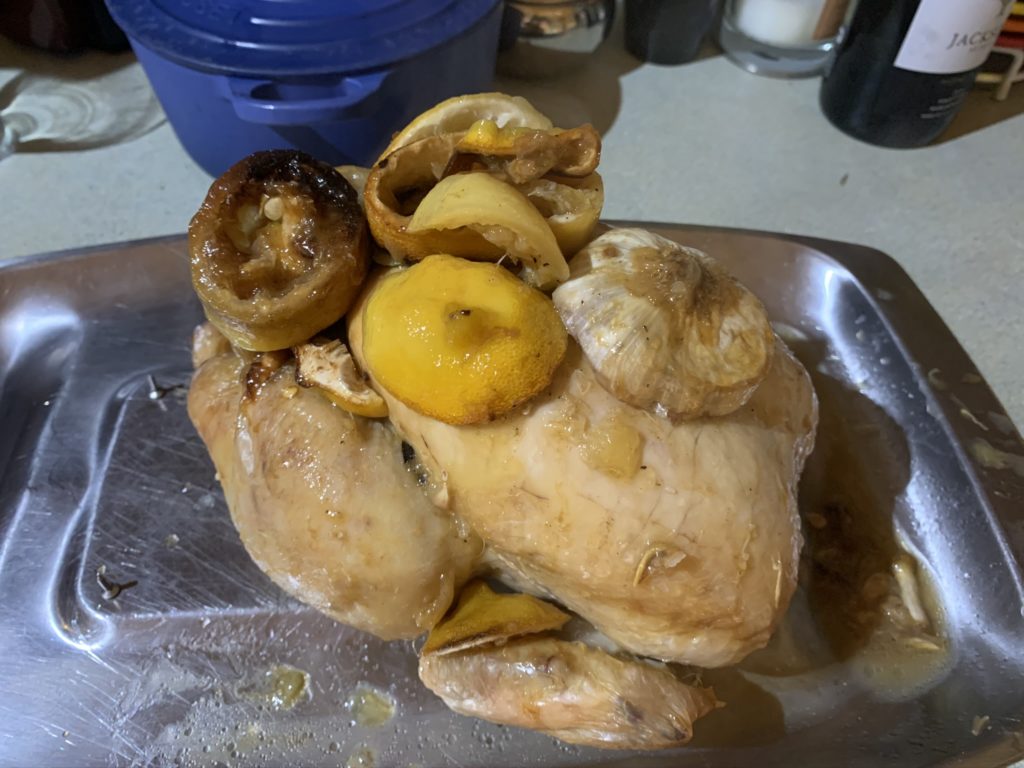
Except, it turns out, when you follow the cooking instructions from the supermarket. An hour and 50 minutes I see it says, for a 1.75 kg (3 lb 14 oz in real money) bird. Even Delia gives 20 minutes per pound and maybe another 20 minutes, which would easily bring us in under an hour 40.
Cook roast meat according to the instructions on the label and you are guaranteed to end up with something—chicken, pork, beef, whatever—that is not just overcooked but tough and dry.
Yes, ideally you’d go to a good butcher and do the maths yourself, but that’s not always convenient or even possible, and to be fair, a lot of supermarket meat is as good if not better than what you get at a butcher—at least if it’s a place that labels properly and you really do know what you’re getting. The trick is, no matter where it comes from, not to overcook it.
If it has a label, a good rule of thumb is to knock 10–15 minutes off, regardless of the meat, and probably cook it slower, too.
A classic on a twist
I shamelessly nicked the idea for this particular version of the old favourite from my friend Parlez on Twitter, whose #ParlezPantry is well worth checking out. He had a picture of halved oranges mixed with red onions on the bottom of a roasting dish, on top of which he plonked a chicken, and I thought mmmm. That was of course delicious, but then I decided to bring it back to something more familiar.

For this chicken dinner I sliced lemons and arranged in the roasting dish. One half of a bulb of garlic sliced in among the lemons; the halved cloves of garlic in the cavity of the bird.

I part ways with Parlez here, because I’ve discovered that salting your meat hugely improves the flavour. I use Malden sea salt flakes, and this sat in the fridge, covered, for about 5 hours before roasting. (Overnight works best for chicken, but we’d had a bit of a late night the previous evening.)
The lemon slices on top add to the flavour, and also help keep the meat moist—as does a sprinkling of olive oil.
Now the secret to the best roast chicken.
Put the bird into a very hot oven (230ºC fan), uncovered, for 15 minutes. This crisps and seals the skin, keeping those lovely juices from evaporating. After the first 15 minutes, cover with a tight-fitting lid, and turn down to 160ºC fan for the rest of the cooking time. You can open the oven during this time to turn your duck fat-coated roasties or whatever, but do not peek at the bird. Again, we need to keep the chicken as moist as possible.
When the time is up, take the chicken from the oven, put onto a carving tray and pierce the thickest part of the meat with a meat thermometer (if you have one—or a skewer or even a fork if not). You’ll be able to tell that it’s cooked before the thermometer registers, because the juice will run clear.

Cover with foil or the roasting dish lid, and leave for 15 minutes or more on the bench as you sort out the rest of the vegetables/make gravy/set the table etc.
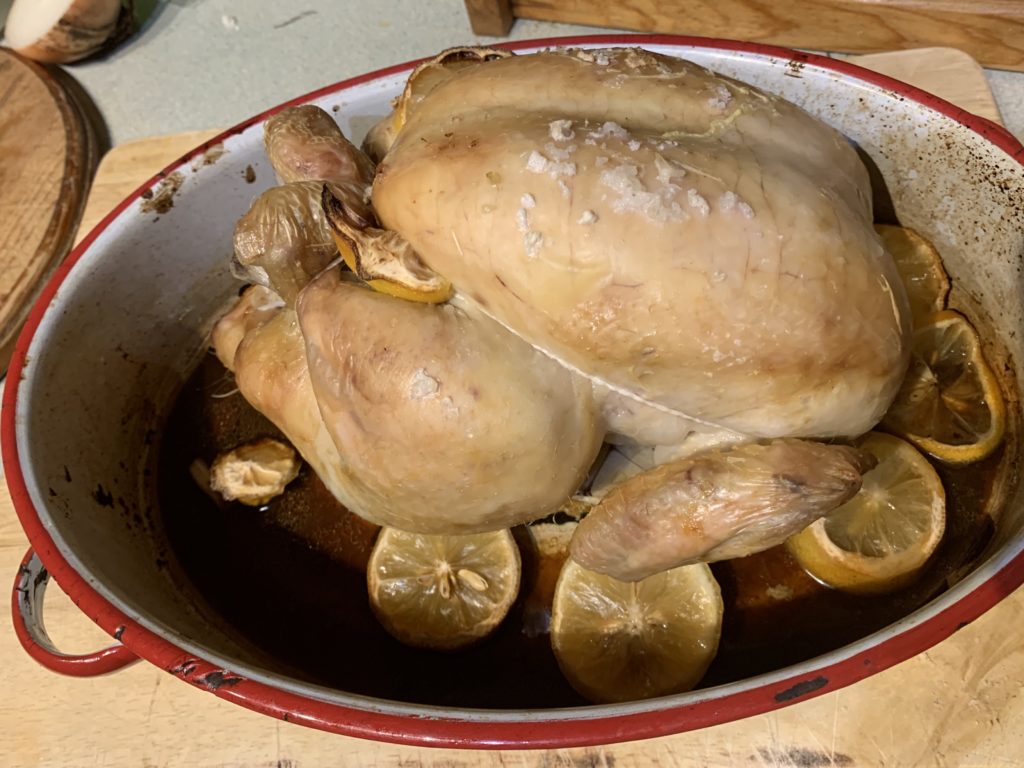
For the gravy, pour some boiling water (either from the kettle or from boiled vegetables if you’re having any) into the roasting dish to capture the natural flavours of the roast. Add a chicken Oxo and thicken with cornflour paste (made with white wine if you have any open). Bring to the boil, stirring as you go. You will find quite a bit of juice has run out from the chicken as it stands—don’t forget to add this to your gravy as well.
Serve with roasties and whatever other vegetables you like. I made fresh French garlic bread to complement the tangy, exquisitely juicy meat.
And everybody had thirds.
